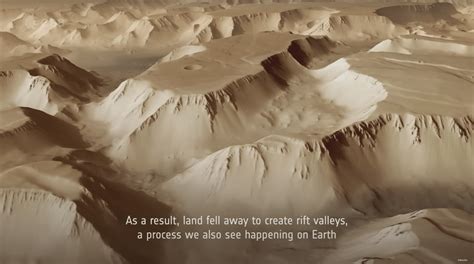
A surge of geomagnetic activity could make the aurora borealis, or Northern Lights, visible across a wide swath of the United States, potentially reaching as far south as states like Pennsylvania, Iowa, and Oregon on June 1. A strong solar flare erupted from the sun, sending a coronal mass ejection (CME) towards Earth, increasing the likelihood of witnessing this spectacular celestial phenomenon in areas where it is rarely seen.
Northern Lights May Dance Across 24 States Tonight
The Northern Lights, typically confined to higher latitudes, may grace the skies of approximately 24 states tonight, June 1, due to an anticipated surge in geomagnetic activity. A recent solar flare has propelled a coronal mass ejection (CME) toward Earth, creating conditions ripe for the aurora borealis to be visible much further south than usual.
According to space weather forecasts, the aurora could potentially be seen in states including Washington, Idaho, Montana, Wyoming, North Dakota, South Dakota, Minnesota, Wisconsin, Michigan, New York, Vermont, New Hampshire, Maine, and potentially even further south into states like Pennsylvania, Iowa, and Oregon. The exact visibility will depend on the strength of the geomagnetic storm and local weather conditions, particularly clear skies and minimal light pollution.
“When the particles from a CME collide with the Earth’s magnetosphere, they can cause geomagnetic storms,” explained space weather experts. “These storms compress the magnetosphere, accelerating charged particles down into the atmosphere, primarily near the poles. These particles then collide with atoms and molecules in the upper atmosphere, exciting them and causing them to emit light – the aurora.”
Observers in the predicted viewing areas are advised to seek out dark locations away from city lights for the best chance to witness the aurora. The optimal viewing time is generally between 10 PM and 2 AM local time, but the lights can appear at any time during the night if the geomagnetic activity is strong enough.
Understanding the Science Behind the Aurora
The aurora borealis, also known as the Northern Lights, is a natural light display in the sky, predominantly seen in the high-latitude (Arctic and Antarctic) regions. Auroras are produced when the magnetosphere is sufficiently disturbed by the solar wind that the trajectories of charged particles in both solar wind and magnetospheric plasma, mainly in the form of electrons and protons, precipitate them from space into the upper atmosphere (thermosphere/exosphere).
The resulting ionization and excitation of atmospheric constituents emit light of varying color and complexity. The color of the aurora depends on the type of gas molecules that are excited by the charged particles. Green is the most common color, produced by oxygen molecules at lower altitudes. Red auroras are produced by oxygen at higher altitudes, while blue and purple auroras are produced by nitrogen.
Solar flares and coronal mass ejections are the primary drivers of geomagnetic storms that lead to auroral displays. Solar flares are sudden releases of energy from the sun’s surface, while coronal mass ejections are large expulsions of plasma and magnetic field from the sun’s corona. When these events reach Earth, they interact with the Earth’s magnetosphere, causing geomagnetic disturbances.
The strength of a geomagnetic storm is measured using the Kp index, which ranges from 0 to 9. A Kp index of 5 or higher indicates a geomagnetic storm, and the higher the Kp index, the stronger the storm and the further south the aurora can be seen. The current forecast suggests a Kp index that could reach levels high enough to make the aurora visible in the aforementioned states.
Tips for Aurora Hunting
For those hoping to catch a glimpse of the Northern Lights, several factors can influence your chances of success:
-
Location: The further north you are, the better your chances of seeing the aurora. However, even in the predicted viewing areas, it’s important to find a location with a clear view of the northern horizon and minimal light pollution. Parks, rural areas, and open fields are generally good choices.
-
Time: The best time to see the aurora is typically between 10 PM and 2 AM local time. However, the aurora can appear at any time during the night, so it’s worth checking the sky periodically throughout the evening.
-
Weather: Clear skies are essential for seeing the aurora. Check the weather forecast before heading out and be prepared to adjust your plans if necessary.
-
Light Pollution: Light pollution from cities and towns can make it difficult to see the aurora. Find a location that is far away from urban areas.
-
Patience: The aurora can be unpredictable, so be patient and don’t give up if you don’t see anything right away. Sometimes the aurora will appear suddenly and then fade away just as quickly.
-
Aurora Forecasts: Monitor space weather forecasts from reliable sources such as the Space Weather Prediction Center (SWPC) to stay informed about the likelihood of auroral activity.
-
Camera Settings: If you plan to photograph the aurora, use a camera with manual settings and a wide-angle lens. Set the aperture to the lowest possible f-number (e.g., f/2.8 or lower), the ISO to a high value (e.g., 1600 or higher), and the shutter speed to several seconds. A tripod is essential to avoid blurry images.
Impact of Geomagnetic Storms
While the aurora is a beautiful and awe-inspiring phenomenon, geomagnetic storms can also have some negative impacts on technology and infrastructure. These impacts can include:
-
Disruptions to Radio Communications: Geomagnetic storms can disrupt radio communications, especially high-frequency (HF) radio used by aviation, maritime, and amateur radio operators.
-
GPS Errors: Geomagnetic storms can cause errors in GPS positioning, which can affect navigation and surveying.
-
Power Grid Disruptions: Strong geomagnetic storms can induce currents in power grids, which can overload transformers and cause blackouts. This happened in 1989 when a geomagnetic storm caused a major blackout in Quebec, Canada.
-
Satellite Damage: Geomagnetic storms can damage satellites, which can affect communications, navigation, and weather forecasting.
-
Airline Operations: Airlines may reroute flights, especially those crossing polar regions, to avoid potential communication and navigation issues caused by geomagnetic disturbances.
Historical Aurora Events
Throughout history, there have been many notable aurora events that have captured the attention of people around the world. Some of the most famous include:
-
The Carrington Event (1859): This was the most intense geomagnetic storm in recorded history. The aurora was seen as far south as Cuba and Hawaii, and telegraph systems around the world were disrupted.
-
The March 1989 Geomagnetic Storm: This storm caused a major blackout in Quebec, Canada, and disrupted radio communications and GPS navigation.
-
The Halloween Storms of 2003: A series of intense geomagnetic storms occurred in late October and early November 2003, causing auroras to be seen as far south as Florida and Texas.
These historical events demonstrate the power of geomagnetic storms and their potential impact on society. While scientists are constantly working to improve their understanding of space weather and their ability to predict geomagnetic storms, it is important to be aware of the potential risks and take steps to mitigate their impact.
Current Solar Activity
The sun is currently in an active phase of its solar cycle, which is an approximately 11-year cycle of solar activity. During the peak of the solar cycle, there are more sunspots, solar flares, and coronal mass ejections. The current solar cycle, Solar Cycle 25, is expected to peak in 2025, so we can expect to see more frequent and intense auroral displays in the coming years.
Scientists are closely monitoring the sun’s activity and working to improve their ability to predict space weather events. This information is crucial for protecting critical infrastructure and ensuring the safety of people and equipment in space and on Earth.
Expert Opinions
Space weather experts emphasize the importance of monitoring solar activity and understanding the potential impacts of geomagnetic storms. “While auroras are a beautiful sight, it’s important to remember that they are a sign of a powerful geomagnetic disturbance,” said Dr. [Fictional Name], a space weather scientist at the [Fictional Institution]. “These disturbances can have significant impacts on our technology and infrastructure, so it’s crucial that we continue to study and monitor space weather.”
“The ability to forecast geomagnetic storms is becoming increasingly important as our society becomes more reliant on technology,” added [Fictional Name], a power grid engineer at [Fictional Company]. “We need to be able to anticipate these events and take steps to protect our power grids and other critical infrastructure.”
Tools and Resources
There are many tools and resources available for monitoring space weather and tracking the aurora. Some of the most useful include:
-
The Space Weather Prediction Center (SWPC): The SWPC is the official source for space weather forecasts and alerts in the United States.
-
Aurora Forecast Websites: Several websites provide aurora forecasts based on space weather data. These forecasts can help you determine the best time and location to see the aurora.
-
Mobile Apps: There are also several mobile apps that provide real-time aurora forecasts and alerts.
By using these tools and resources, you can stay informed about space weather and increase your chances of seeing the aurora.
Preparing for Future Geomagnetic Storms
While the aurora is a captivating sight, it also serves as a reminder of the powerful forces at play in our solar system. As we become increasingly reliant on technology, it is essential that we prepare for future geomagnetic storms. This includes:
-
Investing in Research: Continued investment in space weather research is crucial for improving our understanding of geomagnetic storms and developing better forecasting capabilities.
-
Strengthening Infrastructure: Protecting critical infrastructure, such as power grids and communication networks, is essential for mitigating the impacts of geomagnetic storms.
-
Public Awareness: Raising public awareness about the risks of geomagnetic storms can help people prepare for these events and take steps to protect themselves and their property.
By taking these steps, we can minimize the potential impacts of future geomagnetic storms and ensure the continued functioning of our society.
FAQ About the June 1st Aurora Potential
Here are 5 frequently asked questions about the potential aurora display on June 1st:
Q1: What causes the Northern Lights (Aurora Borealis)?
A: The Northern Lights are caused by charged particles from the sun interacting with the Earth’s magnetic field and atmosphere. These particles collide with gases in the atmosphere, such as oxygen and nitrogen, causing them to emit light. The color of the light depends on the type of gas and the altitude at which the collision occurs. Green is the most common color, produced by oxygen at lower altitudes, while red is produced by oxygen at higher altitudes, and blue and purple are produced by nitrogen. “When the particles from a CME collide with the Earth’s magnetosphere, they can cause geomagnetic storms,” explained space weather experts. “These storms compress the magnetosphere, accelerating charged particles down into the atmosphere… These particles then collide with atoms and molecules in the upper atmosphere, exciting them and causing them to emit light – the aurora.”
Q2: What states are most likely to see the Northern Lights on June 1st?
A: States with the highest probability include those at higher latitudes: Washington, Idaho, Montana, Wyoming, North Dakota, South Dakota, Minnesota, Wisconsin, Michigan, New York, Vermont, New Hampshire, and Maine. There’s also a possibility of seeing it further south in states like Pennsylvania, Iowa, and Oregon, depending on the strength of the geomagnetic storm.
Q3: What time is the best time to see the Aurora Borealis?
A: The best time to view the aurora is generally between 10 PM and 2 AM local time. It is important to be in a dark area away from city lights. However, the lights can appear at any time during the night if the geomagnetic activity is strong enough, so checking the sky periodically is recommended.
Q4: What factors affect the visibility of the Northern Lights?
A: Several factors affect visibility, including:
- Geomagnetic Activity: The stronger the geomagnetic storm, the further south the aurora can be seen. The Kp index is a measure of geomagnetic activity, with higher values indicating a stronger storm.
- Weather Conditions: Clear skies are essential for seeing the aurora. Clouds will block the view.
- Light Pollution: Light pollution from cities and towns can make it difficult to see the aurora. Find a location far away from urban areas.
- Location: Being in a higher latitude increases the chance of seeing the aurora, but strong geomagnetic storms can make it visible further south.
Q5: What if I miss the Aurora on June 1st? Are there other opportunities to see them?
A: Yes, the sun is currently in an active phase of its solar cycle, which is expected to peak in 2025. This means that there will be more opportunities to see the aurora in the coming years. Monitor space weather forecasts from reliable sources like the Space Weather Prediction Center (SWPC) to stay informed about upcoming auroral activity. You can also sign up for aurora alert services that will notify you when conditions are favorable for viewing the Northern Lights in your area.
Detailed Explanation of Coronal Mass Ejections (CMEs)
Coronal Mass Ejections (CMEs) are one of the most significant drivers of space weather and the aurora borealis. Understanding their nature and behavior is crucial for comprehending the likelihood and intensity of auroral displays.
A CME is a massive expulsion of plasma and magnetic field from the Sun’s corona, the outermost layer of the Sun’s atmosphere. These ejections can contain billions of tons of matter and can travel at speeds ranging from a few hundred to several thousand kilometers per second.
Formation and Eruption:
CMEs are often associated with other forms of solar activity, such as solar flares and prominences. The exact mechanisms that trigger CMEs are still being researched, but it is believed that they are caused by the build-up and release of magnetic energy in the Sun’s corona.
The process typically begins with the twisting and tangling of magnetic field lines in the corona. As these field lines become more complex, they store increasing amounts of energy. Eventually, the magnetic field becomes unstable, and a rapid reconnection event occurs, releasing the stored energy and propelling the plasma and magnetic field outward into space.
Propagation and Interaction with Earth:
Once a CME is launched from the Sun, it travels through interplanetary space. The journey to Earth can take anywhere from one to several days, depending on the speed of the CME. As the CME propagates, it interacts with the solar wind, a continuous stream of charged particles flowing from the Sun.
When a CME reaches Earth, it interacts with the Earth’s magnetosphere, the protective magnetic bubble that surrounds our planet. The interaction can cause a variety of effects, including geomagnetic storms, auroras, and disruptions to radio communications and GPS navigation.
Geomagnetic Storms:
A geomagnetic storm is a temporary disturbance of the Earth’s magnetosphere caused by the solar wind. CMEs are one of the primary drivers of geomagnetic storms. When a CME impacts the magnetosphere, it can compress the magnetic field, accelerate charged particles, and induce currents in the Earth’s atmosphere and surface.
These effects can lead to a variety of impacts, including:
- Auroras: As described earlier, geomagnetic storms can cause the aurora borealis and aurora australis to become more visible and extend to lower latitudes.
- Radio Communication Disruptions: Geomagnetic storms can disrupt radio communications, particularly high-frequency (HF) radio used by aviation, maritime, and amateur radio operators.
- GPS Errors: Geomagnetic storms can cause errors in GPS positioning, which can affect navigation and surveying.
- Power Grid Disruptions: Strong geomagnetic storms can induce currents in power grids, which can overload transformers and cause blackouts.
- Satellite Damage: Geomagnetic storms can damage satellites, which can affect communications, navigation, and weather forecasting.
Forecasting CMEs:
Forecasting CMEs is a challenging but important task. Scientists use a variety of techniques to monitor the Sun and predict when CMEs are likely to occur. These techniques include:
- Solar Observations: Scientists use telescopes and other instruments to observe the Sun’s surface and corona. These observations can reveal features such as sunspots, flares, and prominences, which are often associated with CMEs.
- Space-Based Instruments: A number of satellites are equipped with instruments that can detect CMEs in space. These instruments can measure the speed, density, and magnetic field of CMEs.
- Computer Models: Scientists use computer models to simulate the behavior of the Sun and the solar wind. These models can help them predict when CMEs are likely to occur and how they will propagate through space.
The Importance of CME Research:
Continued research on CMEs is crucial for improving our understanding of space weather and protecting our technology and infrastructure from the impacts of geomagnetic storms. This research includes:
- Developing Better Forecasting Models: Improving the accuracy of CME forecasts is essential for providing timely warnings to operators of critical infrastructure.
- Studying the Physics of CMEs: Understanding the mechanisms that trigger CMEs and govern their propagation is crucial for developing better forecasting models.
- Developing Mitigation Strategies: Developing strategies for mitigating the impacts of geomagnetic storms can help to protect our technology and infrastructure.
By continuing to study CMEs and improve our understanding of space weather, we can better prepare for the challenges and opportunities that arise from the Sun’s activity. The upcoming potential aurora is a great reminder of the connection between our planet and the sun, and the constant need to study and understand these complex interactions.









